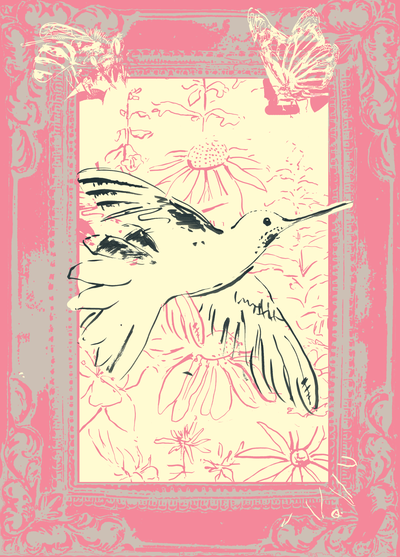In the Garden: Create an oasis for pollinators

Ah, spring: we revel in the delightful weather, beautiful flowers and the background hum of buzzing bees. What would we ever do without those busy pollinators?
If it weren’t for these important creatures, our vegetable and fruit crops wouldn’t produce enough food to sustain us. Our world would be pretty dull, too, since flowers rely on pollinators to help them set seeds and continue their species.
Sadly, pollinators are in a serious decline due to loss of habitat and the use of pesticides. Climate change is another contributing factor since many flowers that are critical to insects’ life cycles are blooming earlier.
Who are the pollinators? The obvious ones are honeybees and bumblebees. But there are also solitary bees, butterflies, moths, hover flies, wasps, beetles and even hummingbirds.
What can we do to help? If we add pollinator-attracting plants to our landscapes or create a garden dedicated to pollinators, we can make a difference. The goal is to provide pollinators with pollen- and nectar-producing plants, habitat for nesting and hibernation, and host plants for their young.
Here are some important considerations for creating a pollinator garden:
Choose a sunny site with a water source nearby. Possibilities include transforming an unused area of your yard, an old flower bed or part of your front lawn to create a delightful place rich with color and buzzing with activity.
Once your site is ready, it’s time to select plants, which is every gardener’s favorite activity. When possible, choose native perennials and shrubs although it’s certainly acceptable to include pollinator-attracting non-natives.
Select the hardiest plants you can find. Even though the Inland Northwest is in USDA hardiness zones 5 and 6, choose plants that thrive in lower zones if you can. Look for selections that are drought-tolerant as well.
Choose a variety of plants and be sure to plant multiples of each. Ideally, your pollinator garden should be in bloom from spring to fall.
While planting, remember to leave some bare soil for bumblebees to nest in. And why not add a butterfly puddling pool while you’re at it? This involves placing a plant saucer or other shallow container on the soil, filling it with sand and water, and then refilling it with water on a regular basis. Butterflies are attracted to the salt and minerals in it and will typically visit during the warmest part of the day. One way to keep the puddling pool filled with water is to either locate it next to a leaky faucet or sprinkler, or to run a line of drip tubing from a sprinkler to the pool so it refills every time the sprinkler runs.
Once all of the plants are in, be sure to water them on a regular basis, especially for the first two years. This helps plants become established and even applies to drought-tolerant plants. Add mulch to the soil surface to help retain moisture and make it more difficult for weeds to grow.
Add in a mason bee house or insect hotel, and your pollinator garden will be open for business.
Remember to leave spent flowers on the plants so they can reseed themselves. While this can be challenging for gardeners wanting to keep things tidy, it’s important to allow the garden to renew itself. And besides, birds will enjoy eating some of the nutritious seeds during the fall and winter months.
Above all, avoid using pesticides since they ultimately cause more problems than they solve. These chemicals are non-selective, meaning that in addition to killing targeted insects, they also kill the beneficial predatory insects that would have helped resolve the problem. Insecticides can cause additional problems for pollinators that survive the spray, such as impacting their ability to navigate throughout their environment.
Learn more about pollinator gardens in this week’s “Everyone Can Grow A Garden” video at youtube.com/c/susansinthegarden.
Susan Mulvihill is co-author, with Pat Munts, of “Northwest Gardener’s Handbook.” Contact her at Susan@susansinthegarden.com.